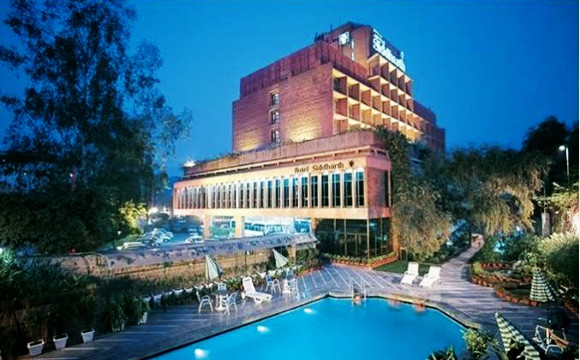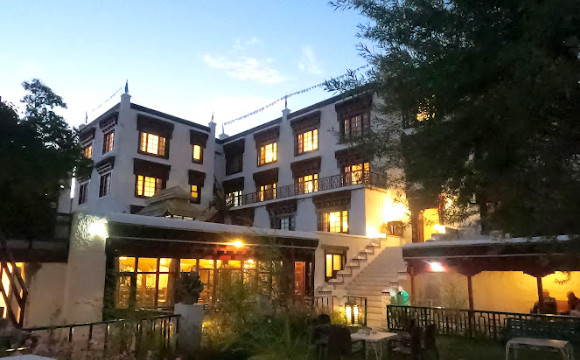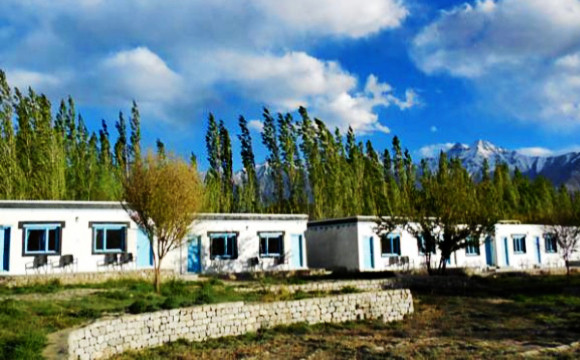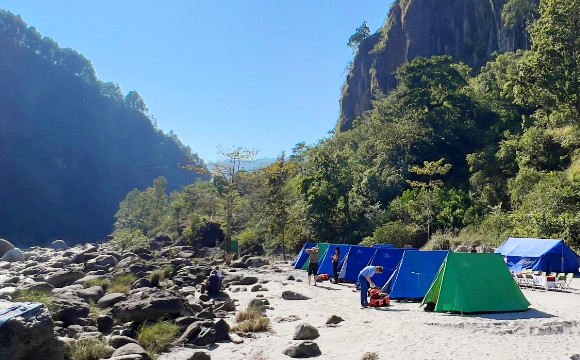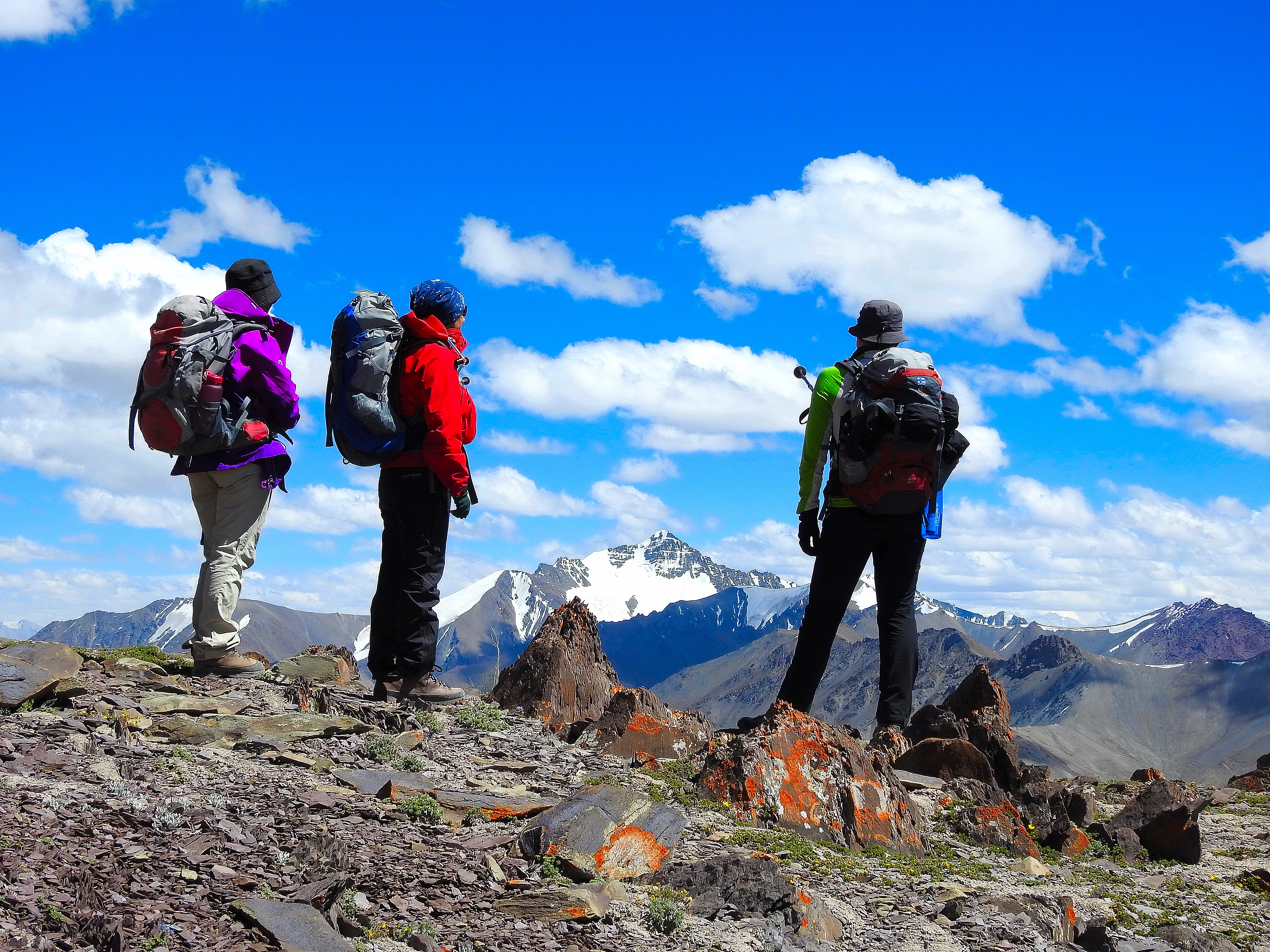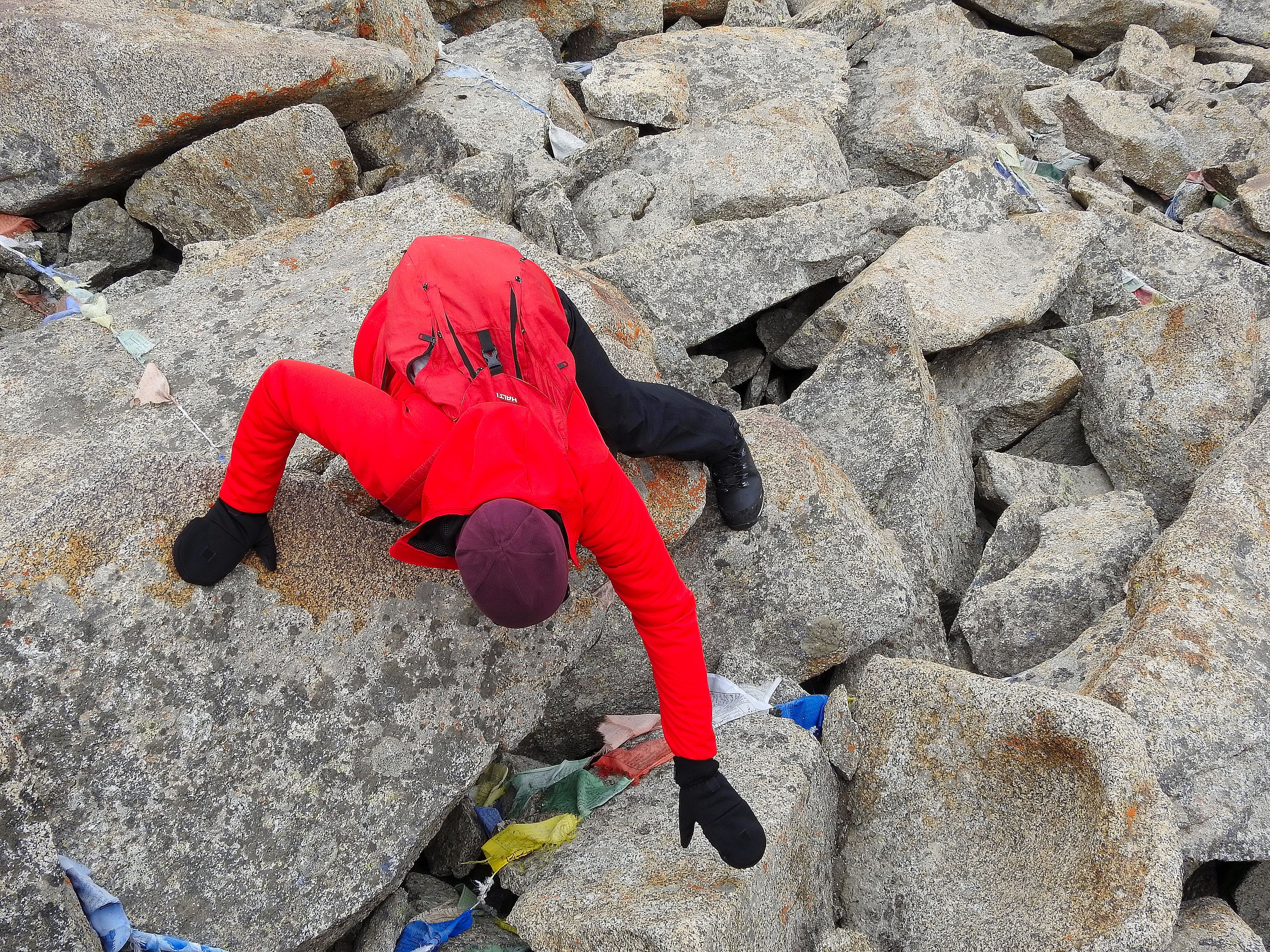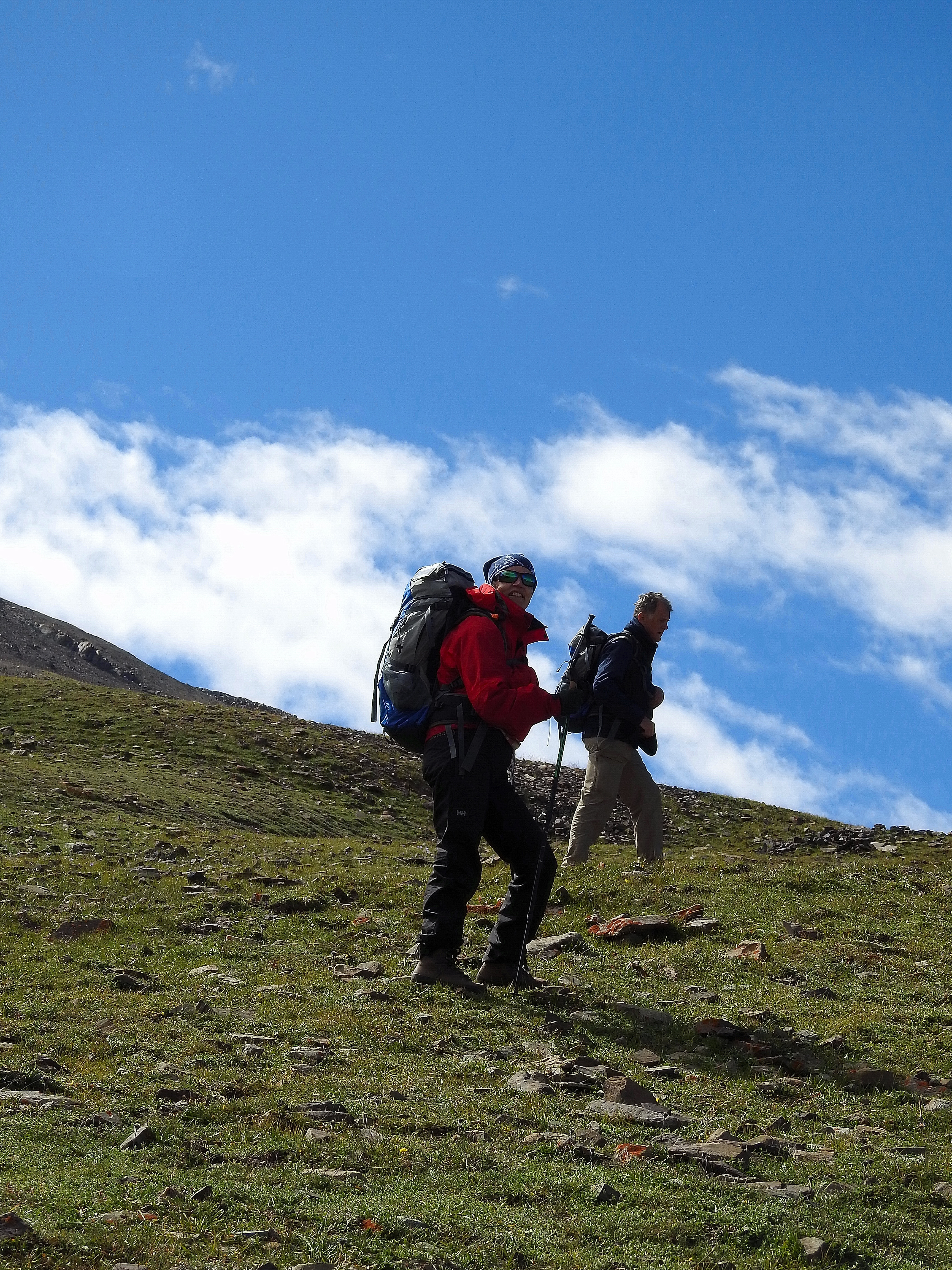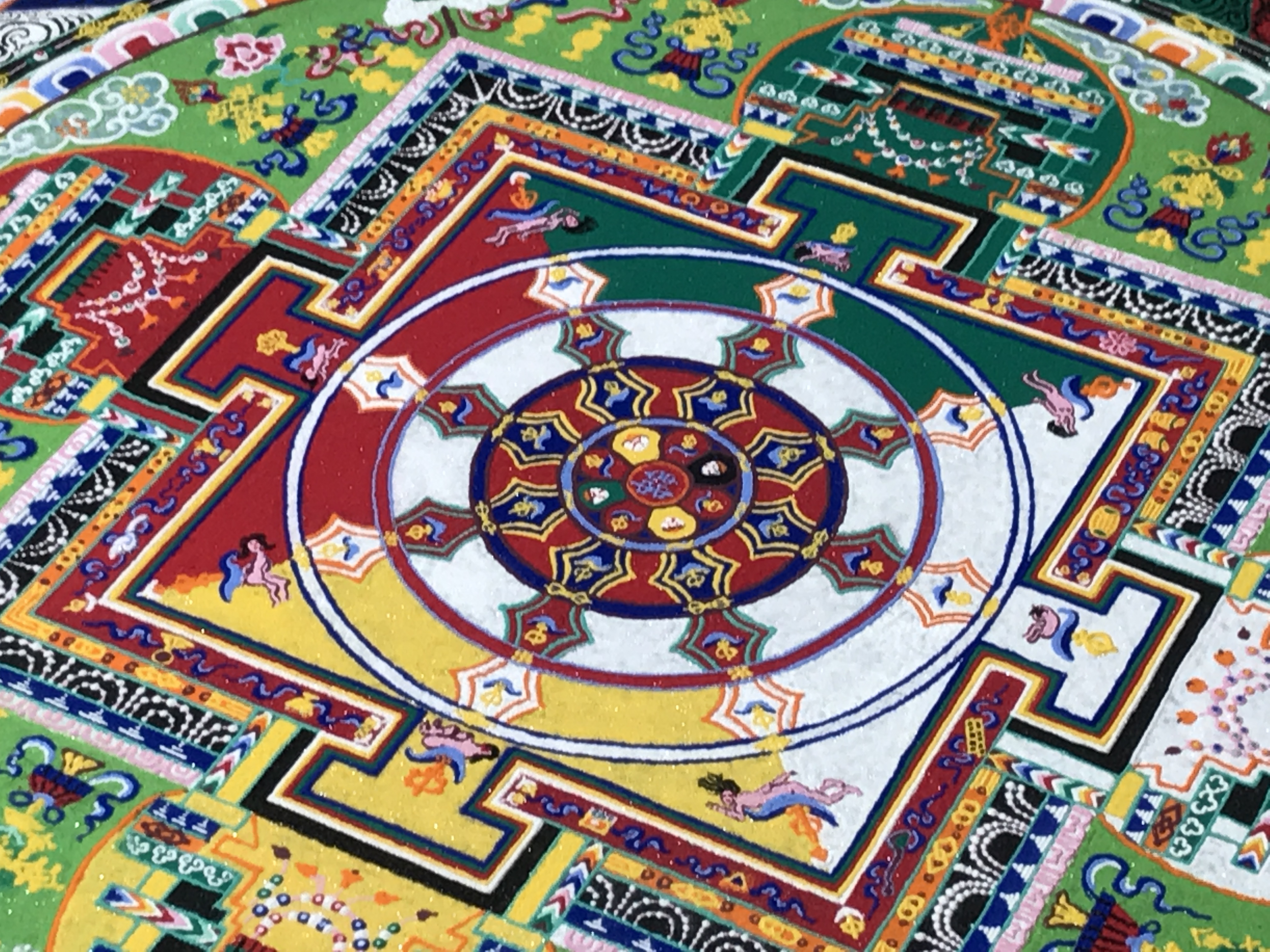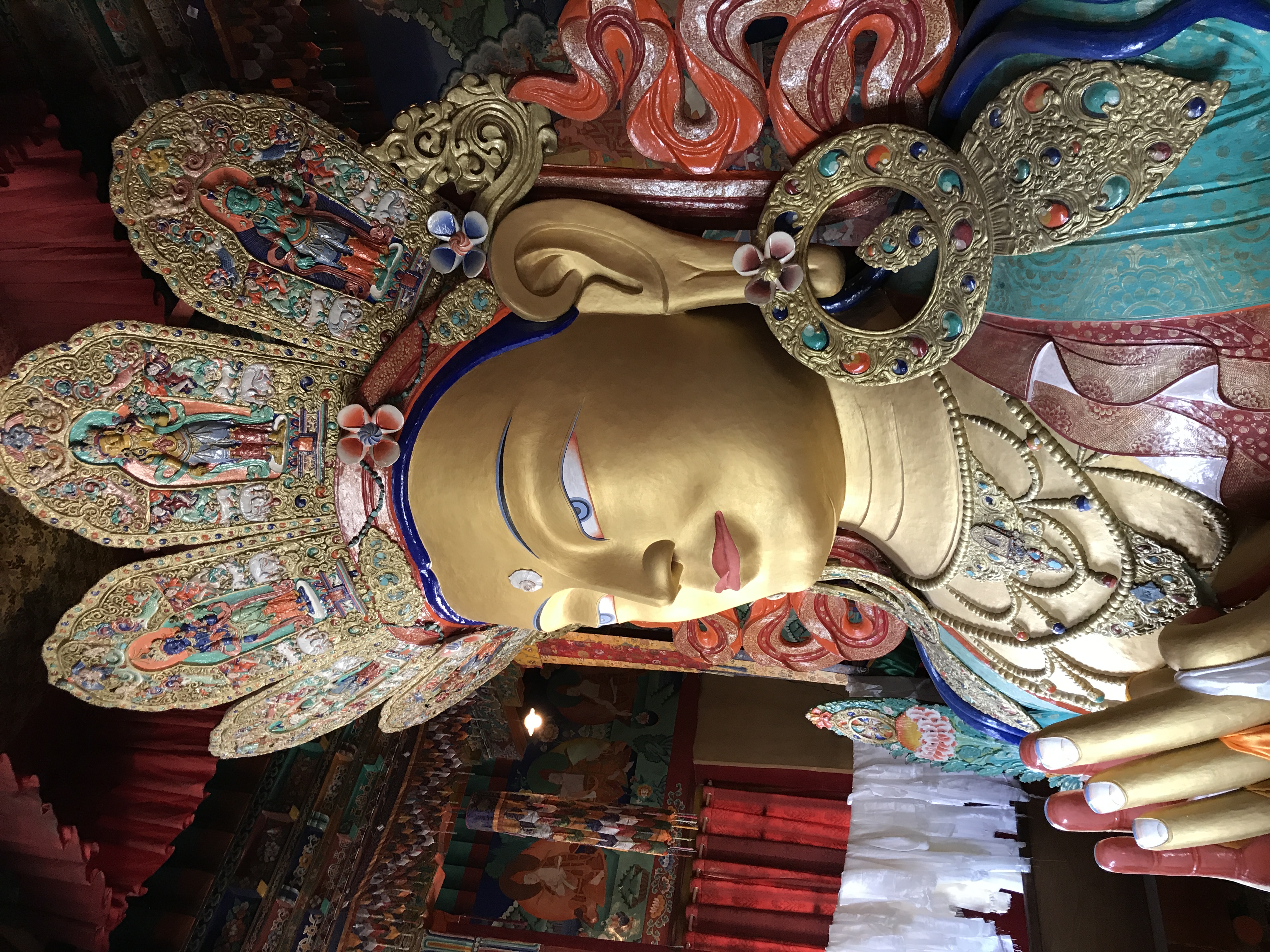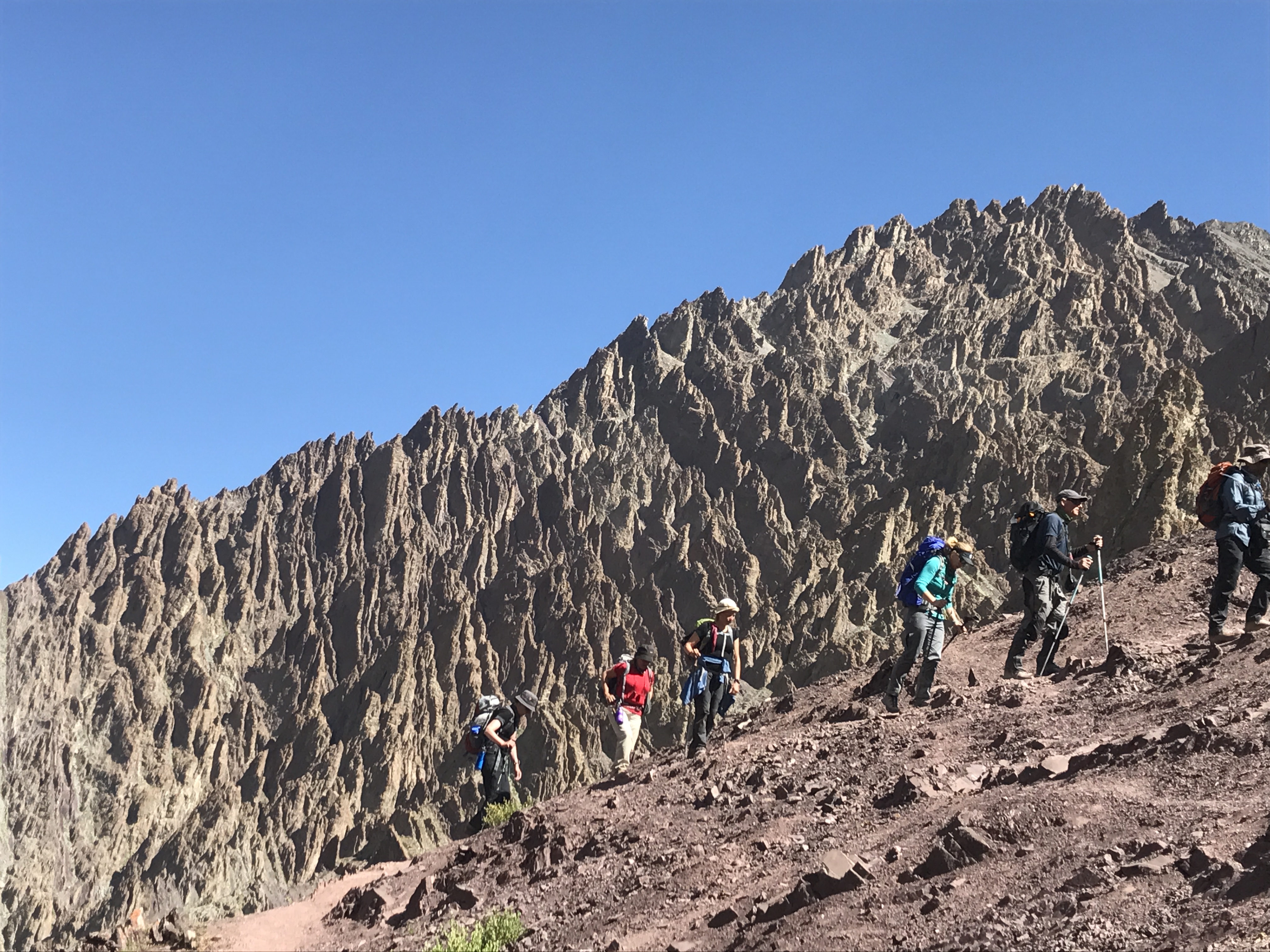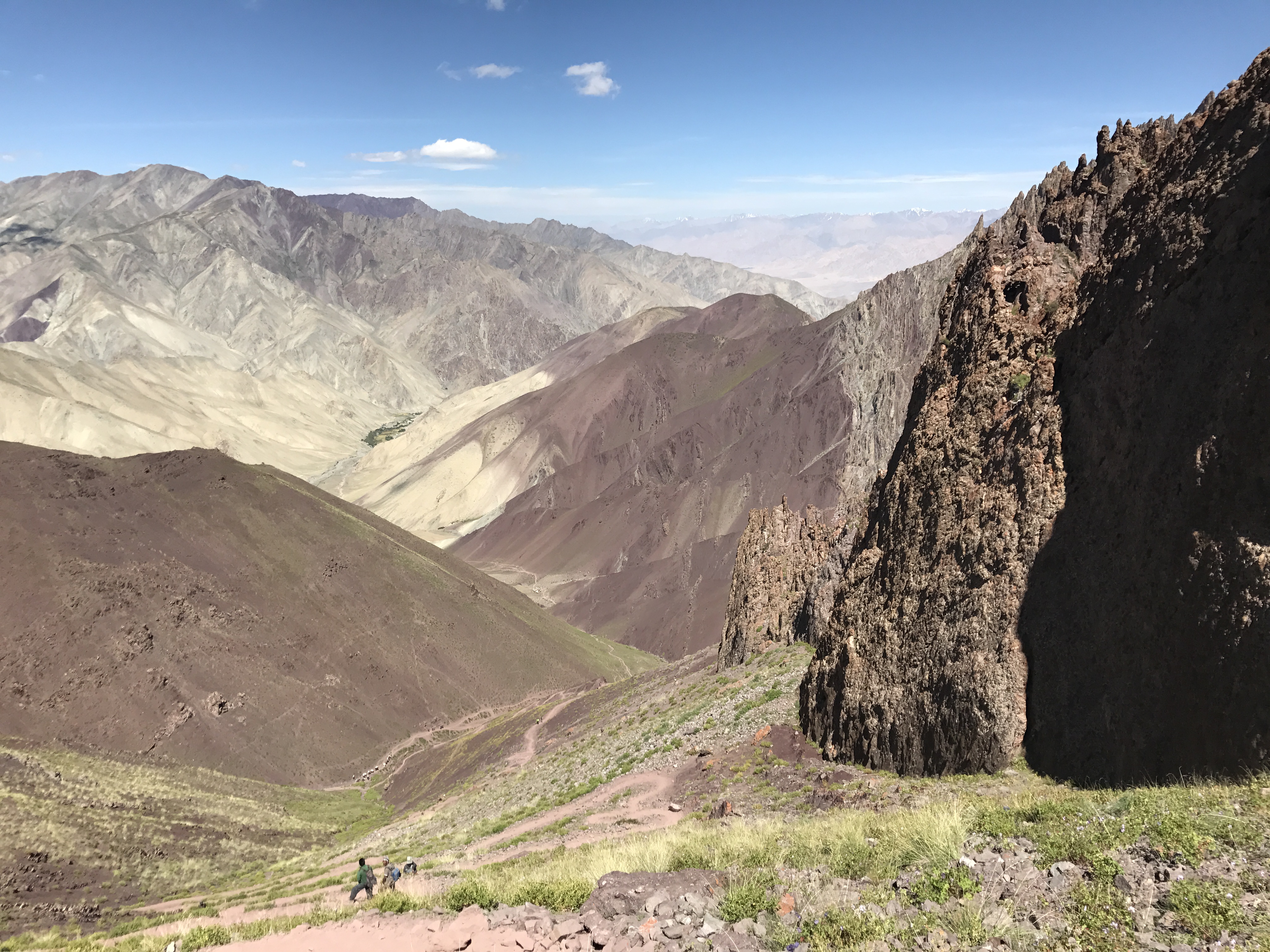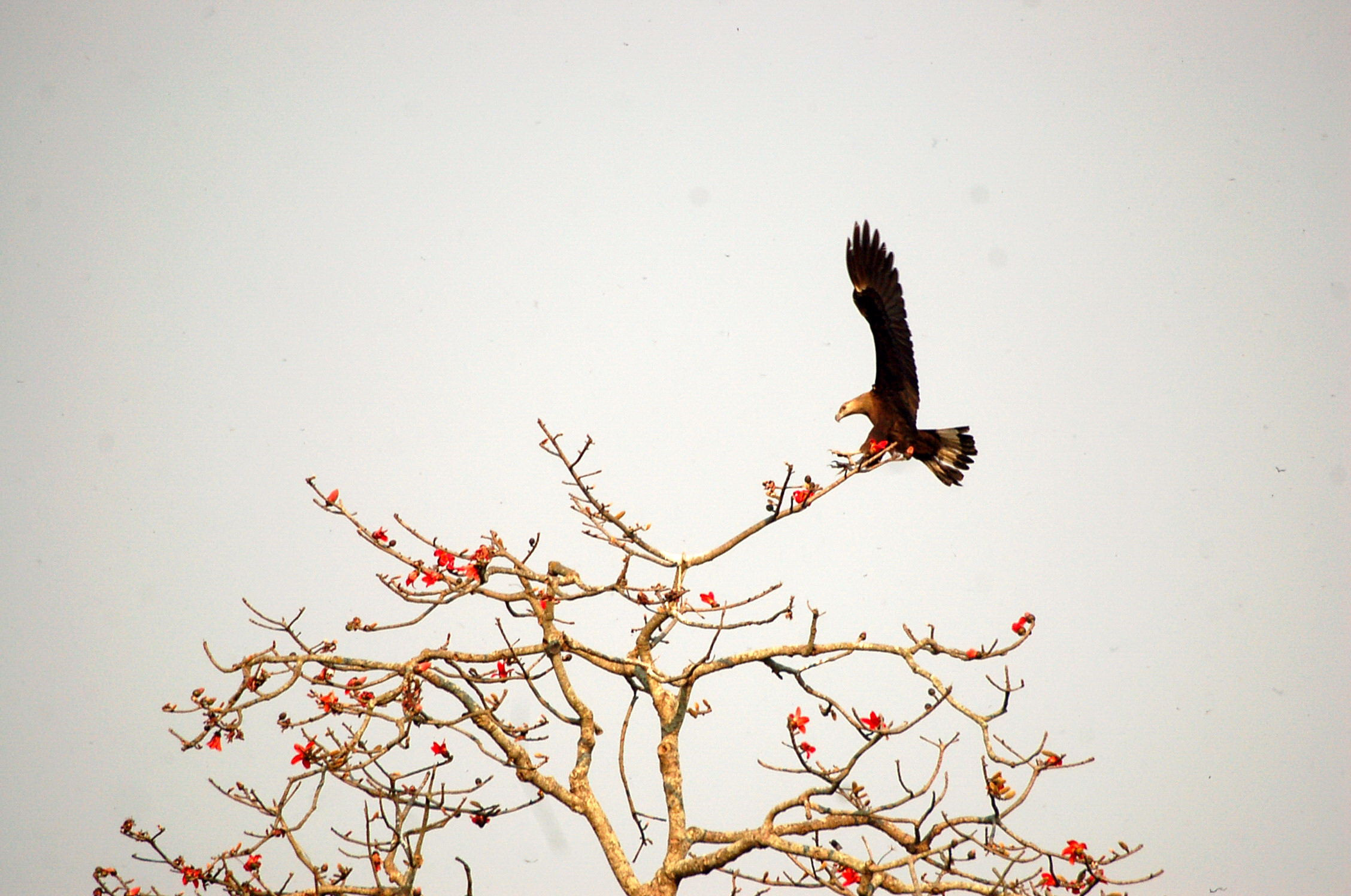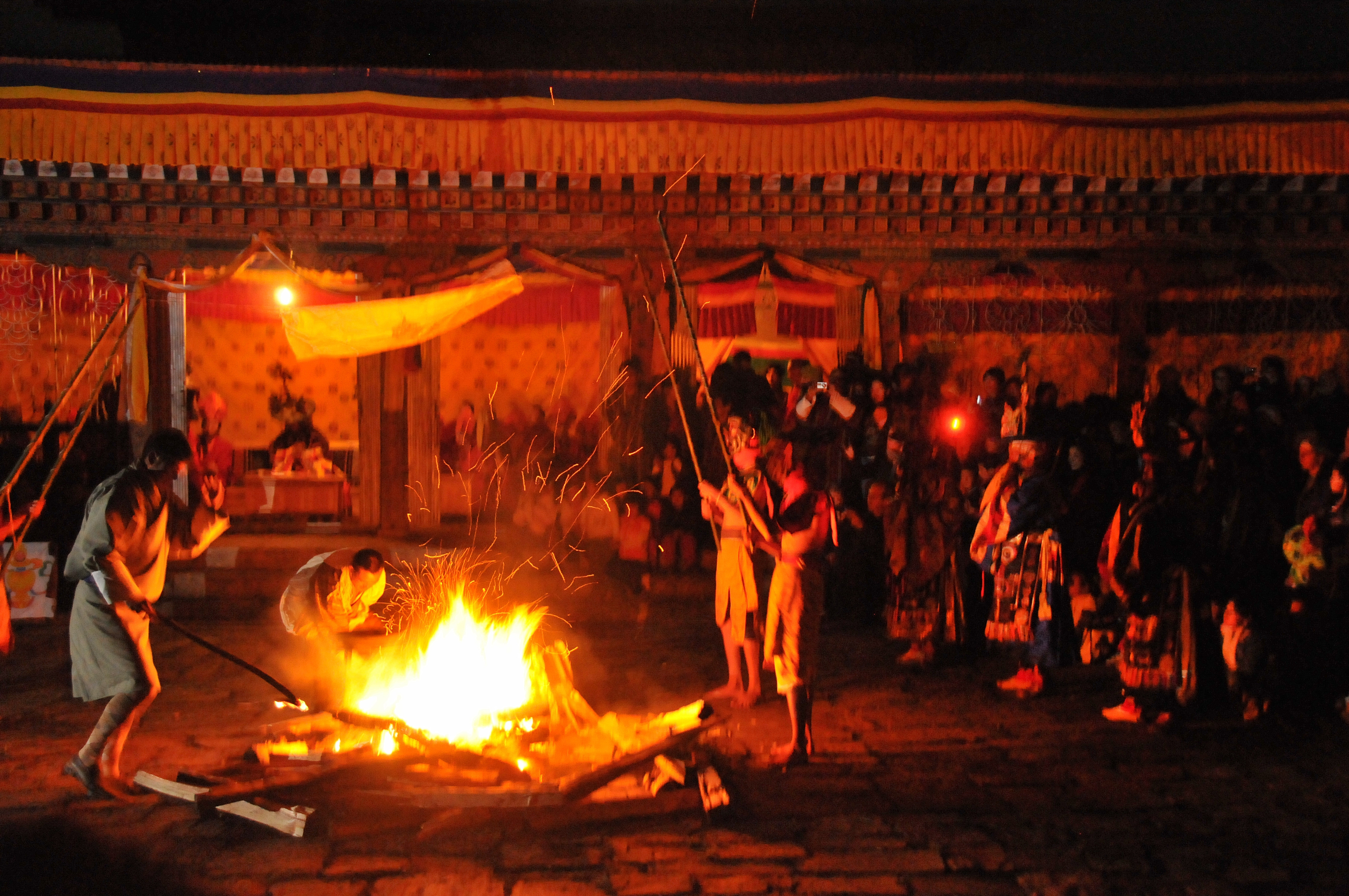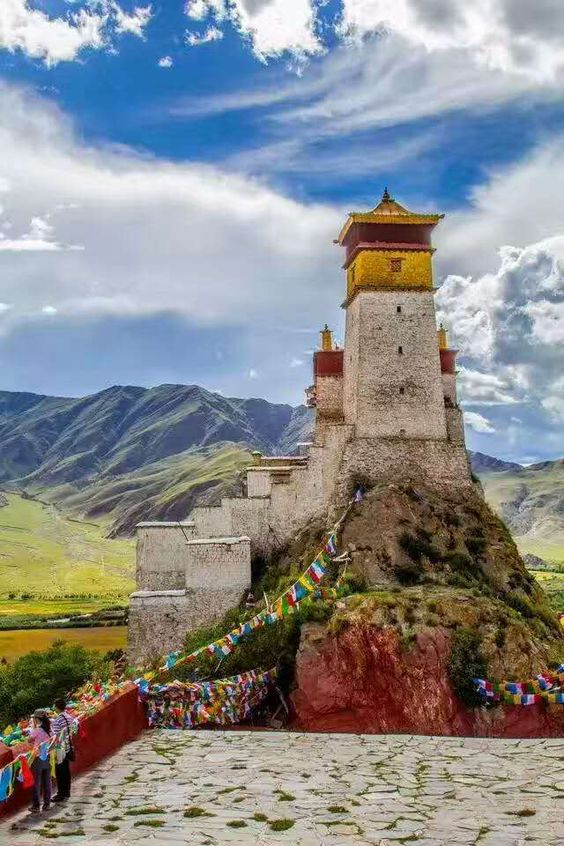Stok Kangri Trek & Peak Climbing
Highlight
-
Conquer a 6,000 m/20,000 ft peak
-
Enjoy panoramic vistas over the Indian Himalaya and Karakorum
-
Sleep in remote wild camps
-
Trek amidst towering rock cathedrals and over high passes
-
Easy day hikes with in a unique Himalayan region
-
Enjoy panoramic vistas over the Indian Himalaya and Karakorum
-
Visit to the most beautiful Buddhist monasteries & villages of the Indus Valley.
- Nubra, the valley of flowers with day walks.
Trip Facts
Start & End Point
Delhi/Delhi
Duration
16 Days
Best Time
Jul - Sep
Grade
Very Strenuous
Activity
Trekking | Climbing
Accomodation
3-5* Hotel/Camping Tent
Meals
15 Breakfasts, 8 Lunches, 9 Dinners
Max. Elevation
6153 m
Itinerary
Welcome to India! Upon arrival in India a HIM-NAT guide/representative will be at the airport to greet and take us to our hotel. Please look out for your name-card once you exit out of arrival area.
Rest of the day is free to relax and recover from your flight or for individual exploration of Delhi.

Accommodation
The Jaypee Siddhartha
Meals
Dinner
Maximum Altitude
216 mOptional Experience
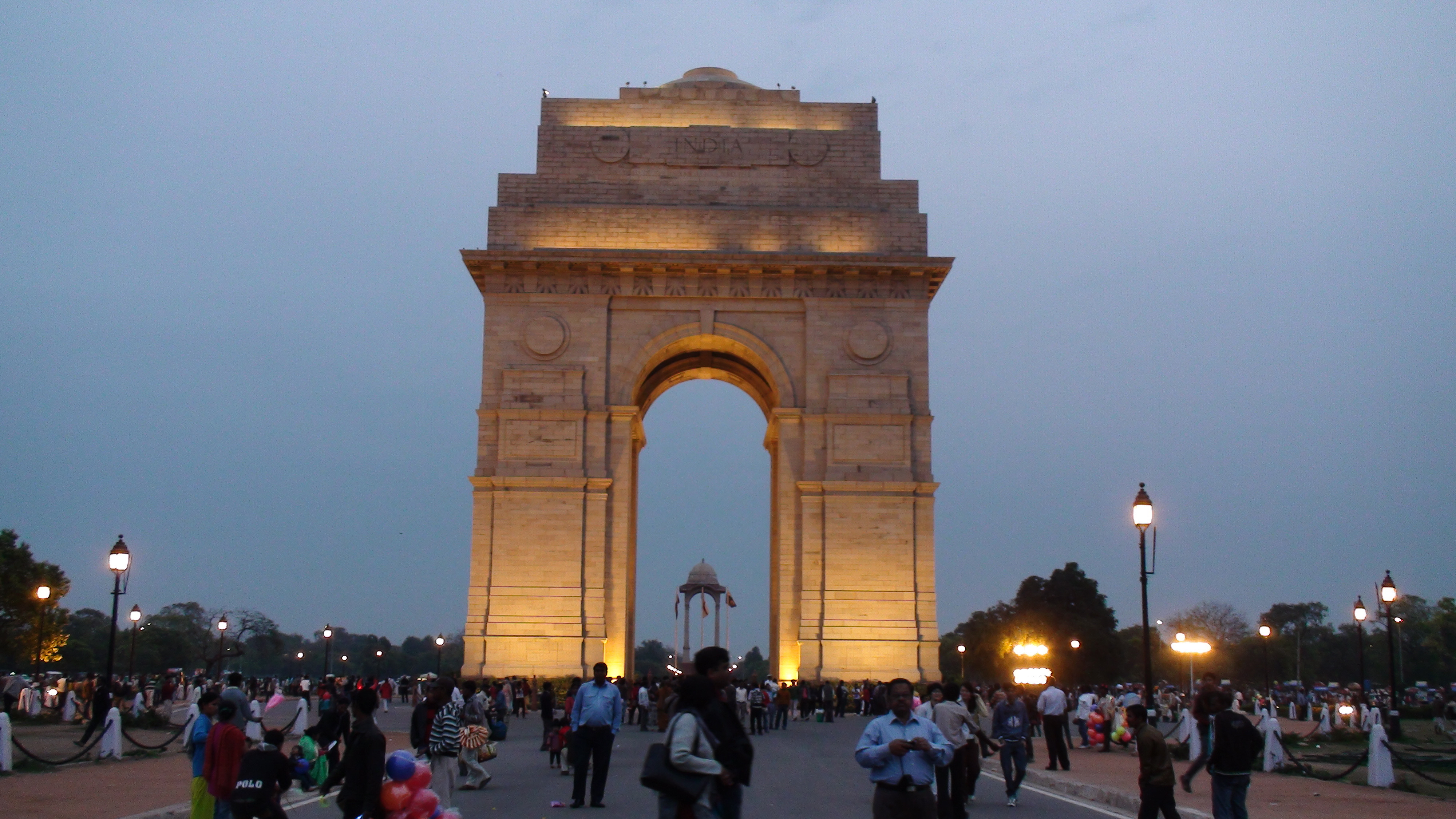
Sightseeing of Delhi
The Jamia Masjid
This great mosque of Old Delhi is the largest in India, with a courtyard capable of holding 25,000 devotees. It was begun in 1644 and ended
up being the final architectural extravagance of Shah Jahan, the Mughal...
A very early start today for the flight to Leh. We usually leave the hotel at around 3 am and drive to the airport for the very early morning but highly spectacular flight over the Himalaya to Leh. If the weather is good and the flight goes on time we should be in Leh for breakfast.
In the morning we rest and catch up on some sleep and in the afternoon there will be a gentle orientation walk of Leh and its bazaars.
The rest of the day is free to relax and acclimatize to the altitude (3,500 m).

Accommodation
Lharimo Hotel
Meals
Breakfast, Dinner
Maximum Altitude
3,500 mVisit Shey and Tikse Monasteries | Leh Palace
Today there is a sightseeing tour to two of the major gompas (monasteries) in the area. We first drive to Shey, a former Royal Palace of the Ladakh kings. Inside is a small temple containing a 350 year old copper and gold statue of Buddha. From Shey we take a gentle walk (approx. 1 hour) to Tikse, where we visit the large and spectacular monastery – perched on top of a hill – its red and white buildings can be seen for miles. A recently built temple contains a magnificent image of the Future Buddha.
We return to Leh in the afternoon and there is time to explore the bazaar.

Accommodation
Lharimo North Cottage
Meals
Breakfast, Dinner
Maximum Altitude
3,500 mWe leave Leh after breakfast and drive to Tegar – Summor, 125 km which takes about 5 hours. Today we drive over Khardungla Pass 5,602 m which is the highest motor-able mountain pass in the world! While at the pass we will take short climb up to one of the ridge to enjoy panoramic vistas over the Leh valley in the south to Stok Kangri, dominating the skyline across the valley. From North Pullu- if time permits we walk downhill along a gushing glacier stream to the Khalidong high alpine valley towards the Nubra Valley.
In Nubra we check-in at Deluxe Cottages in Tegar (with toilets and hot and cold shower facilities).
In the late afternoon take a short walk through the village and visit one of the local homes where butter tea and chang (local barely beer) shall be served. This is subject to permission being granted by the family.

Accommodation
Lharimo North Cottage
Meals
Breakfast, Dinner
Maximum Altitude
5,359 mToday we explore the monasteries at Diskit and Hunder and also visit the town of Diskit – the District Headquarters of Nubra Valley.
District Headquarters of Nubra Valley.
Diskit and Hunder Monasteries
The Diskit Village is located slightly off the little hamlet of Khalsar. Dotted with apricot plantations, Diskit is amongst the larger villages in the region, and home to the 350 year-old Diskit Gompa – the oldest, and the largest monastery in the Nubra Valley. It belongs to the Gelugpa sect of Tibetan Buddhism. The road between Diskit and the quaint little Hunder Village winds through a gorgeous stretch of sand dunes. Keep your eyes open for the double-humped camels! The Hunder Gompa has some old frescos and a statue of Buddha. The monastery is also the best place in the village for a view of the dipping sun.
Also there are possibilities to do camel ride in Hunder Sand Dunes. This is the only place in India where double-hump camels are found. Actually these camels were part of the caravans which passed through Nubra valley and stopped after independence of India.

Accommodation
Lharimo North Cottage
Meals
Breakfast, Dinner
Maximum Altitude
5,359 mMorning visit to Summer Monastery and village around Summer. Afterwards drive back to Leh and upon arrival in Leh stay at Hotel. Today we drive approx 125 km which takes about 4.5 hours.
Summer
Summer is home to the Nubra valley’s most important monastery, Samstem Ling Gompa, thirty minutes’ walk behind the village. Built in 1841, the Gompa is home to over a hundred Gelugpa monks, aged between seven and seventy. Action centers on the large Du-khang, which is hung with Thangkas and dominated by a huge gilded statue of Shakyamuni, accompanied by Maitreya and the protector deity Mahakala. Across the courtyard, the long, low Gon-Khang is guarded by statues of fierce protector deities strung wit wide-eyed skulls and figurines of the 84 Mahasiddhas, venerated Tantric saints. Samstem ling is linked to the Gompa of Rhizdong in the Indus valley west of Leh.
The rest of the day in Leh is free to explore the back streets and bazaars of Leh.

Accommodation
Lharimo Hotel
Meals
Breakfast, Dinner
Maximum Altitude
3,048 mA leisurely start this morning allows us time to separate out our climbing gear (ice-axe, crampons, harness, helmet and summit boots if you have a different pair) which we will leave at the hotel – this will rejoin us at Mankarmo or base camp in time for our summit climb.
We leave Leh and drive to the start point of our trek. The road follows the Indus River for a short while before turning off into a small dirt track, which winds along following the Zanskar River. The scenery is truly spectacular as the valley narrows into a gorge. Where the track ends we leave our vehicle and have a short climb to Choksi (3,210 m) where we camp. This pretty village is a model of self-sufficiency. It is inhabited by one large extended family who farm this small valley.
In the afternoon we can have a short acclimatization walk in preparation for tomorrow

Accommodation
Camping Tent
Meals
Breakfast, Lunch, Dinner
Maximum Altitude
3,210 mA fairly hard first days walking as we climb very steeply out of Choksi, walking on some loose scree and shale, and gain over 1,000 m in altitude before reaching our next camp.
As we ascend the valley narrows and becomes more and more spectacular. Looking back we can see the magnificent rock formations of the Ladakh mountains. The dramatic mountains in various shades of purples, greens and browns can be seen for miles in every direction. The trail ascends the valley all day and our first night’s camp is a small rocky site by a shepherd hut.
In the afternoon we will have an acclimatization walk up the valley which is opposite the camp for views of the surrounding peaks.

Accommodation
Camping Tent
Meals
Breakfast, Lunch, Dinner
Maximum Altitude
4200 mShort walk to the base of Kang La | Optional acclimatization walk up to the Peak.
For acclimatization purposes we have a very short walk today, steadily continuing up the Choksi Valley to the base of the Kang La (4,900 m).
We will have lunch at camp and in the afternoon we will trek to the top of the small rocky peak behind camp at 5,056 m. From the top the views are magnificent – we can see the Kang La and Palam Peak ahead and the Himalayas are spread out in front of us with the Ladakh range in front. This is one of the most spectacular wild camps with great views across to the Karakorum.
Look out for marmots whistling to one another all around the campsite.

Accommodation
Camping Tent
Meals
Breakfast, Lunch, Dinner
Maximum Altitude
4,900 mToday is a hard day as we cross our first two passes. The climb is a long ascent, which is gradual at first with a last steep rocky section to the top of the Kang La (5,260 m). The paths are little used and can be indistinct. From the top of the pass we have the opportunity to walk up Palam Peak (5,380 m) for views second only to the view from the summit of Stok Kangri. Ahead we can now see the summit of Stok Kangri and in the distance is Leh. Behind us the Ladakh Range and Himalaya can be seen for miles. From the top we descend a little and then contour round into the next valley. As the trail contours round the top of the valley we have great views across to Stok Kangri. We contour round the valley and on up to our second pass, the Ganda La (4,970 m). This pass provides access into the Markha Valley and we may well see other trekkers today crossing the pass in the opposite direction. From the pass we can see our route for the next couple of days. We camp at the base of the Ganda La.

Accommodation
Camping Tent
Meals
Breakfast, Lunch, Dinner
Maximum Altitude
5,260 mIt’s an easy descent down the valley and we walk through the one house village of Yurutse to the valley bottom. Crossing the river we have a short ascent to Rumbak village. Rumbak has round 20 houses and we may well be invited in to a local house to try the traditional Ladakhi butter tea. Our camp is just beyond the village at the base of the Stok La tonight (approx. 4,300 m). Ahead the mountains are truly amazing; fold after fold of multicolored jagged rock tower above us and as the sun sets and the light fades the colors change dramatically. One of the beauties of this short trek is that it is a geologist’s paradise; every pass we cross brings us in to another spectacular valley with intriguing rock formations.

Accommodation
Camping Tent
Meals
Breakfast, Lunch, Dinner
Maximum Altitude
4300 mToday is probably one of the most spectacular walks in Ladakh as we cross the Stok La (4,900 m), our last pass of the trek. At first we trek on a beautiful, gently sloping trail, but then the path becomes steeper and steeper as it zigzags up to the top of the pass. Rock flutes rise all around us, home to the elusive snow leopard. From the top the views are even more spectacular; layer upon layer of multicolored rock cathedrals are spread before us in every direction.
The descent is very steep at first and then we contour round two valleys to the junction with the river coming down from Stok Kangri. We follow the river, crossing a few side streams, until we reach a shepherd settlement at Mankarmo (4,380 m). Look out for the herds of Blue Sheep scrambling on the rocks around camp.

Accommodation
Camping Tent
Meals
Breakfast, Lunch, Dinner
Maximum Altitude
4,380 mhe next two days are devoted to our ascent of Stok Kangri. From Mankarmo the trail ascends the valley easily. It is a half day walk to base camp and as we ascend the valley Stok Kangri can clearly be seen ahead of us. There will probably be a couple of river crossings today. We will reach our base camp by lunch time and the afternoon is spent resting and preparing for the climb. Gear will be checked and there will be a full briefing about tomorrow’s ascent and a run through of walking in a rope team and with crampons. After an early dinner we retire to bed to rest for a few hours.

Accommodation
Camping Tent
Meals
Breakfast, Lunch, Dinner
Maximum Altitude
5,000 mThe summit day is long and hard (at least 12-15 hours). We leave at about 1 am and start with a one hour steep climb out of the base camp to a ridge. The trail then eases for a while as we follow the valley gradually up on a rocky trail for a couple of hours to the glacier. Crossing the glacier we come to the foot of the climb. The gradient now increases significantly and it is a very steep two hours to the ridge. Usually there is snow at this point and we will have to use our ice axe and crampons. The sun should just be rising as we reach the ridge and we can see almost all the way back to Leh. We will usually rope up for the last two hours up the ridge, which is quite steep and is exposed for some of the time, with some scrambling on loose (sometimes icy) rock. Finally we spot the prayer flags on the top and a final steep section will bring us to the summit. The altitude will be the greatest difficulty, though.
The climb from camp to the summit will take six to eight hours. The final hundred meters needs special care while crossing the slopes just below the summit. From the summit the views are amazing. Miniscule Leh can be seen in the distance, and all around us the snow-capped peaks of the Himalaya, the Karakorum and the Ladakh Range reach far to the horizon. We spend a short while at the top to savor the beauty of it all and regain our breath before descending slowly and carefully back to Base Camp, where the crew will be waiting with welcome hot food.
(Please note the actual climb is entirely optional. For anyone not intending to climb there are wonderful walks from the base camp itself. There will be an optional walk for those not climbing to the glacier at the foot of Stok Kangri for magnificent views).

Accommodation
Camping Tent
Meals
Breakfast, Lunch, Dinner
Maximum Altitude
6,153 mAn easy but particularly spectacular walk down the valley to Stok. As we descend layer upon layer of multicolored rocks surround us. The trail finally emerges from this amazing gorge and the valley widens as we approach Stok village where our transport will meet us for the short drive back to Leh.
We return to Leh by lunch time for a welcome hot shower and a well-deserved celebration.

Accommodation
Lharimo Hotel
Meals
Breakfast, Dinner
Maximum Altitude
3,500 mAn early start for the flight back to Delhi.
The rest of the day is free in Delhi for individual shopping or sightseeing .
Evening Farewell dinner in a fine local restaurant followed by transfer to airport to connect flight to onward destination.

Accommodation

Meals
Breakfast, Dinner
Maximum Altitude
216 mDate & Cost
Price: US$ 2,485 per person (Twin Sharing | Based on Minimum 4 Travelers)
Single Supplement: US$ 475
Include
- Airport (pick up/drop off) transfers by private A/C vehicle
- Twin-Sharing accommodation in all hotel/resort/lodge as mentioned
- Daily breakfast throughout the trip, other meals as mentioned in the itinerary
- Transport services by cars/SUVs or mini-bus/large bus depending on group size (for all transfers, long distance drive and sightseeing as per program)
- Entrance Fee at National Park (Hemis National Park).
- Permit fee to climb Stok Peak
- Services of an English speaking guide
- A professional Trekking/Climbing Guide on trek
- Complete trekking arrangements which shall include all meals during trekking (bed Tea, Breakfast, Lunch, afternoon Tea, Dinner), 2 men Alpine tents with compressed Foam mattress. Kitchen Tent, Dinning tent, accompanying Kitchen staff, Pack Ponies/Porters/Yaks to carry the baggage/Kitchen utensils/ Camping equipment etc. The arrangements for trekking are of good standard which includes good service, good food and good equipment. However, we suggest that guests bring their own sleeping bags for their comfort failing we shall provide same from our end on advance request
- Ropes for the final section to the summit
- Rooms for wash & change on the last day in Delhi before departure with farewell dinner on last evening
Exclude
- International & domestic flights tickets
- Visas or vaccinations
- Travel insurance
- Meals not mentioned in the itinerary
- Personal clothing & equipment
- Tips for trip leader/guide, driver, hotel staff and porters
- Any expenses of personal nature, such as alcohol and soft drinks, telephone, medicines, laundry etc
- Items/services not listed in "included"
- Extra expenses/payment for 'Optional’ activities/programs if opted in
Accomodation
Gallery
Map
Frequently Asked Questions
While prior climbing experience is not mandatory, you should have excellent physical fitness and some trekking experience, preferably at high altitudes. Basic knowledge of using crampons and an ice axe is helpful but can be taught during the climb.
The trek is considered challenging due to its high altitude and steep ascent to the summit. Although the climb is non-technical, you will need to be physically fit and acclimatized to handle the altitude and terrain.
You need to be in excellent physical shape, with good endurance and stamina. Training involving cardio exercises, hiking, and strength-building is recommended before attempting the trek.
Yes, as the trek reaches over 6,000 meters, altitude sickness can be a concern. Acclimatization days are built into the itinerary to minimize the risk. Drinking plenty of water, trekking at a steady pace, and following your guide's advice can help.
Accommodation includes guesthouses or hotels in Leh and camping in tents during the trek. Campsites are equipped with basic facilities for comfort.
Yes, all meals are included during the trek. Nutritious and energy-packed meals are prepared to support high-altitude trekking.
You will need the Stok Kangri Peak climbing permit, which will be arranged by us. Additionally, an Inner Line Permit may be required for foreign nationals trekking in Ladakh.
Solo attempts are not recommended due to the risks involved with high-altitude trekking and climbing. It is best to go with an experienced guide or group for safety.
During the trek, daytime temperatures can range from 15°C to 20°C, while nighttime temperatures can drop significantly, especially at higher altitudes, often falling to -10°C or lower near the summit.
Yes, we can customize the itinerary based on your preferences, group size, or fitness level to make the experience tailored to your needs.
In case of emergencies, evacuation by helicopter or other means can be arranged. However, trekkers are required to have travel insurance that covers high-altitude trekking and emergency evacuation.
